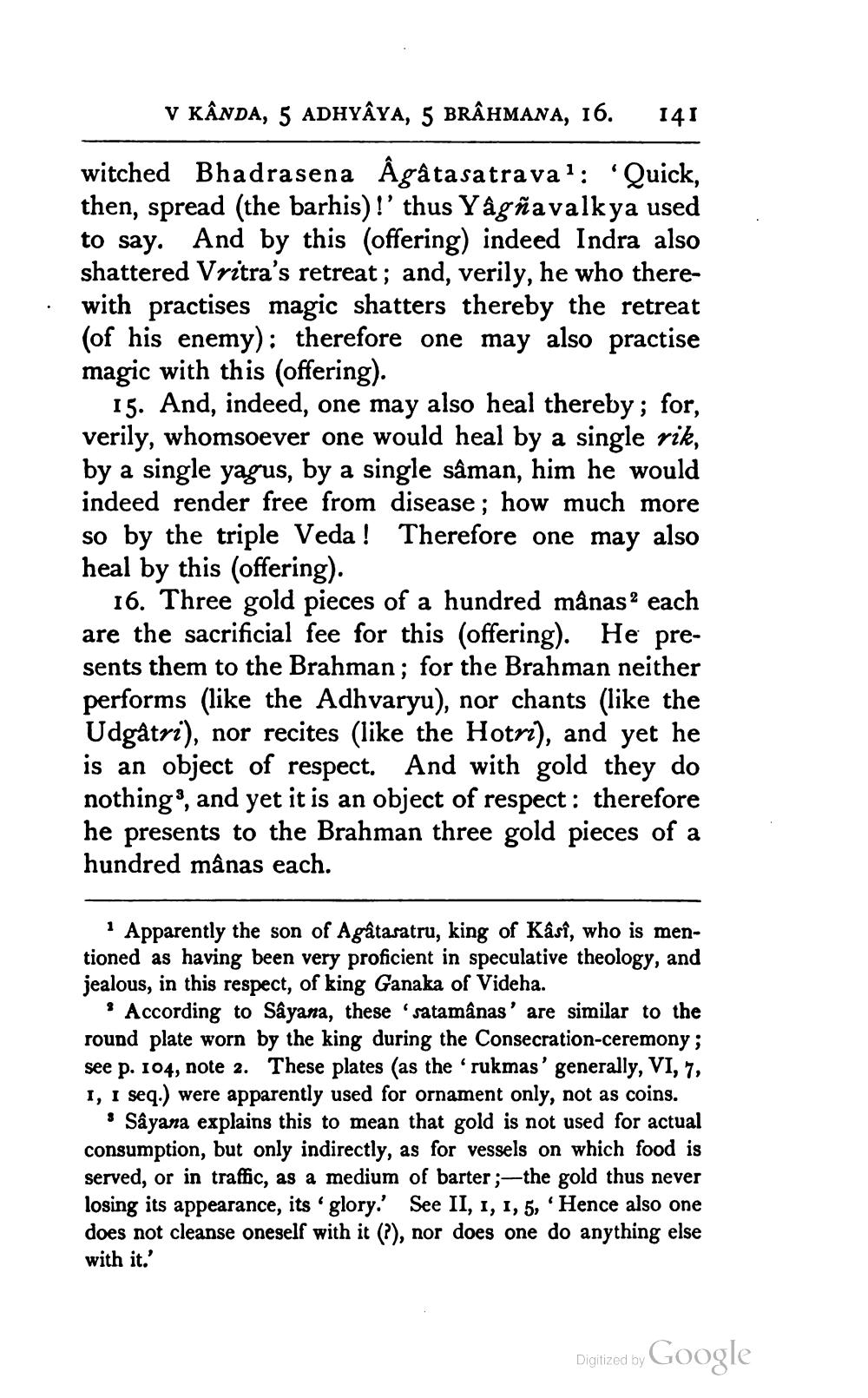________________
V KÂNDA, 5 ADHYÂYA, 5 BRÂHMANA, 16.
141
witched Bhadrasena Âgâta satrava 1: 'Quick, then, spread (the barhis)!' thus Yâgñavalkya used to say. And by this (offering) indeed Indra also shattered Vritra's retreat; and, verily, he who therewith practises magic shatters thereby the retreat (of his enemy): therefore one may also practise magic with this (offering).
15. And, indeed, one may also heal thereby; for, verily, whomsoever one would heal by a single rik, by a single yagus, by a single saman, him he would indeed render free from disease; how much more so by the triple Veda! Therefore one may also heal by this offering).
16. Three gold pieces of a hundred mânas? each are the sacrificial fee for this offering). He presents them to the Brahman; for the Brahman neither performs (like the Adhvaryu), nor chants (like the Udgåtri), nor recites (like the Hotri), and yet he is an object of respect. And with gold they do nothing, and yet it is an object of respect : therefore he presents to the Brahman three gold pieces of a hundred mânas each.
Apparently the son of Agâtasatru, king of Kâsî, who is mentioned as having been very proficient in speculative theology, and jealous, in this respect, of king Ganaka of Videha.
According to Sâyana, these 'satamânas' are similar to the round plate worn by the king during the Consecration-ceremony; see p. 104, note 2. These plates (as the 'rukmas' generally, VI, 7, 1, I seq.) were apparently used for ornament only, not as coins.
Sâyana explains this to mean that gold is not used for actual consumption, but only indirectly, as for vessels on which food is served, or in traffic, as a medium of barter ;—the gold thus never losing its appearance, its glory.' See II, 1, 1, 5, 'Hence also one does not cleanse oneself with it (?), nor does one do anything else with it.'
Digitized by Google




